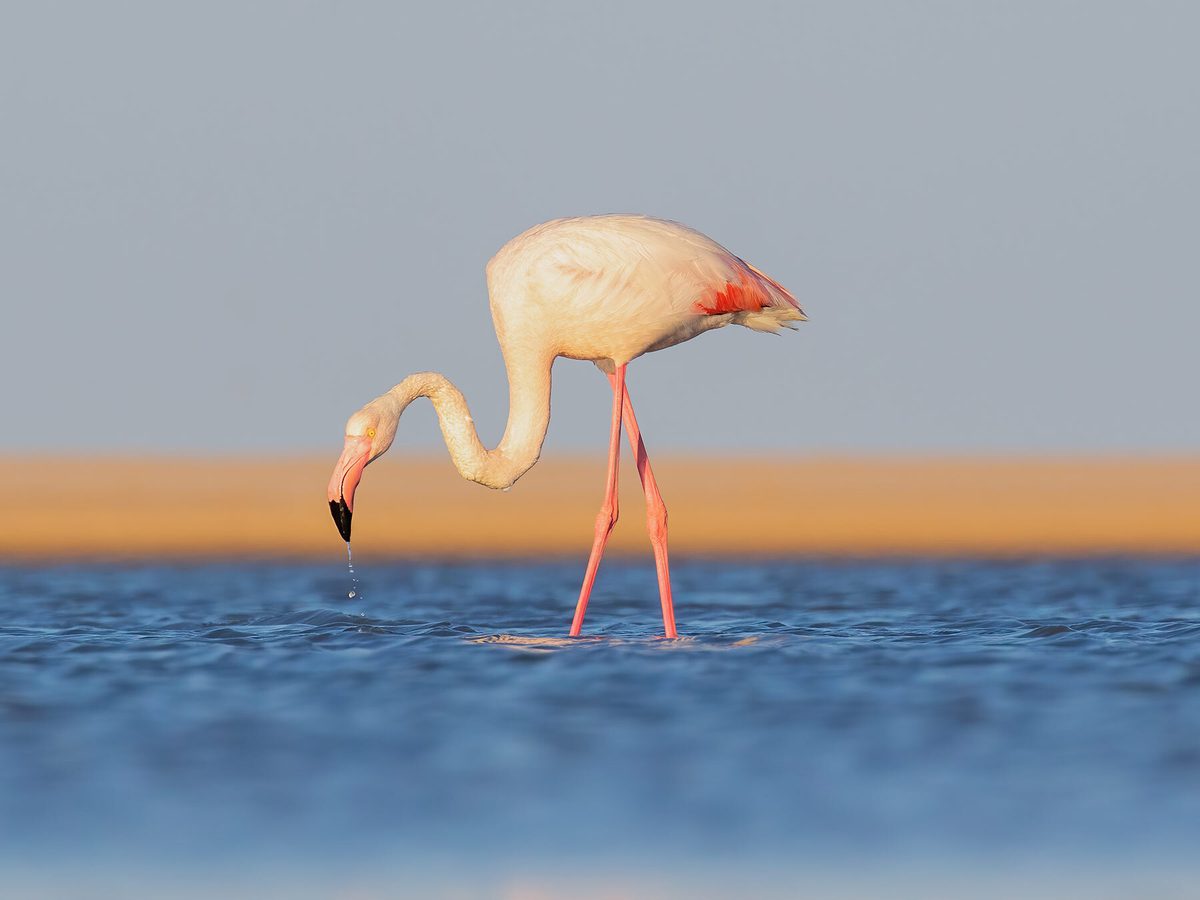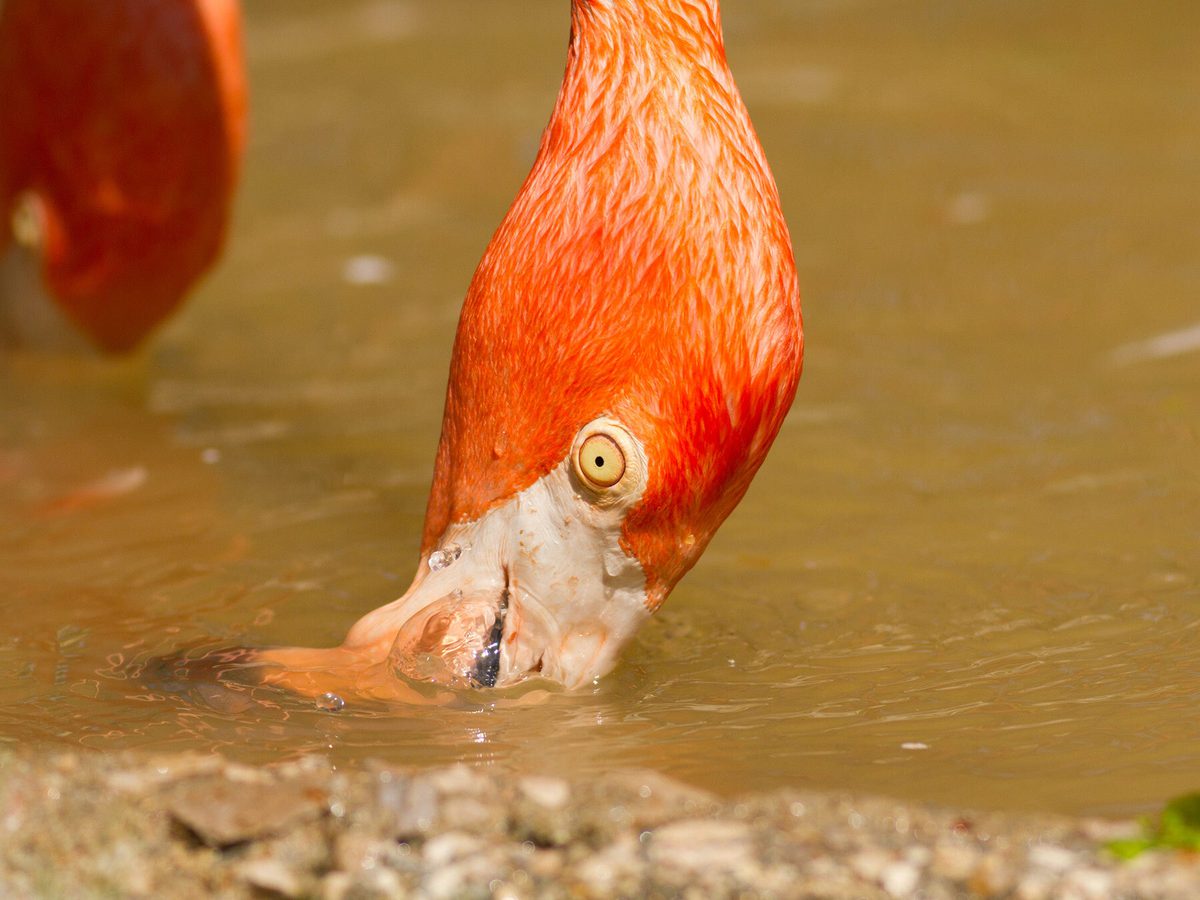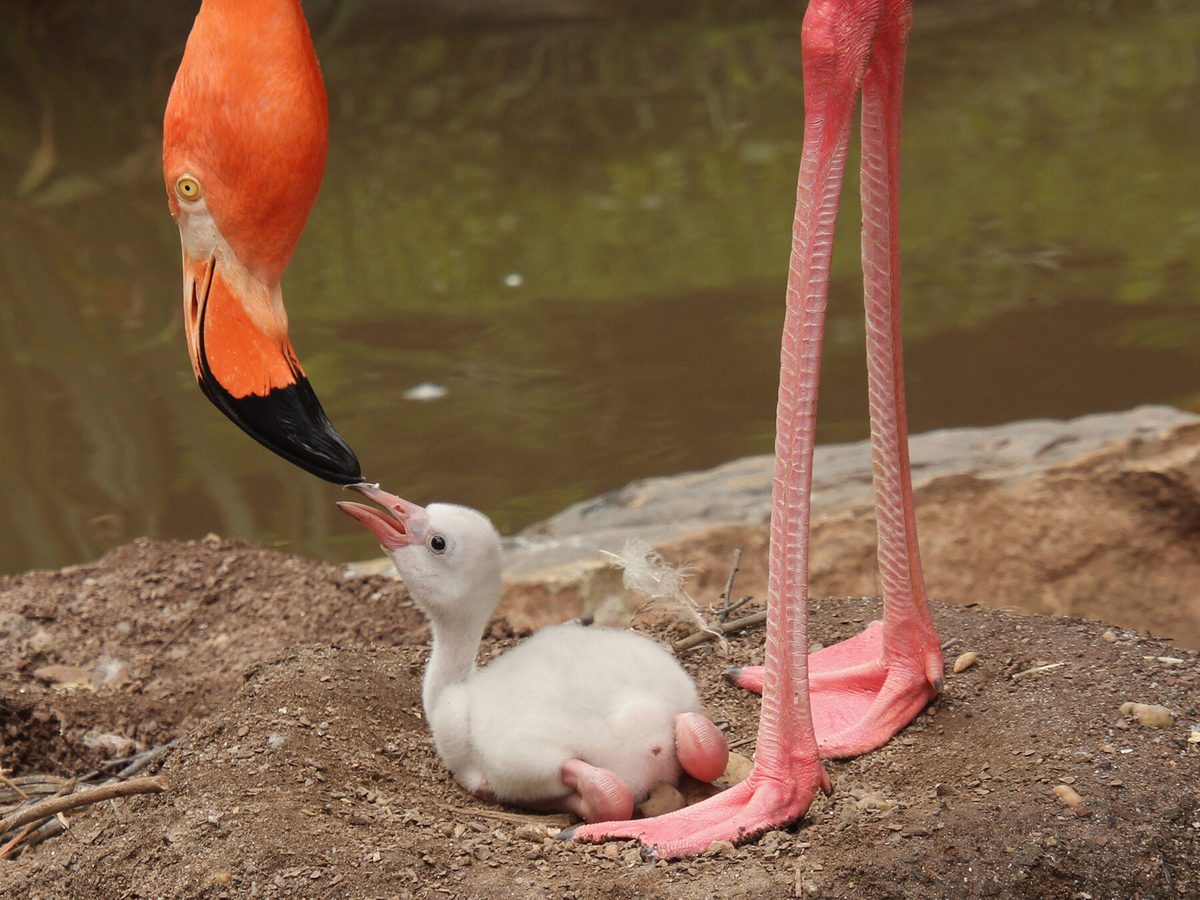If you've ever watched flamingos feeding, you might have wondered why they're standing there with their heads completely upside down.
Turns out these birds are nature's living water filters, and they're absolutely brilliant at it - so brilliant that they're the last surviving members of their entire order of birds.
These pink waders spend hours sweeping their curved beaks through shallow waters, stirring up all sorts of tiny treats. Their heads move back and forth like underwater vacuum cleaners, filtering out algae, tiny shrimp, and microscopic water plants. As well as these items, they'll also eat crabs, molluscs, crayfish and small fish.
Watch closely and you'll notice how they stamp their feet in the mud - they're actually stirring up their food from the bottom.
The Spanish weren't far off when they named them "flamengo" - flame-coloured ones - though these living filters have to work for that fiery pink hue.

Flamingo eating and searching for food in the water
The really fascinating bit happens inside their beaks. Their lower jaw - stronger than the upper and able to move independently - pumps water through their natural sieves about four times every second.
Stand near a feeding group, and you'll hear a soft, constant mumbling sound as they filter their meal. Different species have different preferences - the Greater flamingos are proper fishermen, while their Lesser cousins stick mainly to algae buffets.

A pair of Andean Flamingos feeding together
During algae blooms, you'll spot entire flocks gathered in the shallowest parts of lakes, especially where the water takes on that distinctive reddish or greenish tinge.
That's where they find the carotenoid-rich organisms that give them their famous pink colouring.
Some clever ones even "touch up" their colour by preening with special secretions from a gland near their tail - talk about putting on your best feathers for dating season!

Close up of flamingo feeding in the water
In the heat of summer, they'll often feed at dawn and dusk, when their tiny prey tends to gather near the water's surface.
Watch a feeding flock then, and you might see them doing this peculiar dance - stepping sideways in unison, dozens of pink bodies moving like synchronised swimmers as they stir up their microscopic meal.
Come the breeding season, you might spot something even more remarkable - parents feeding their chicks a rich red substance that looks almost like blood.
This "crop milk," produced in a special part of their digestive system, sustains their grey-feathered youngsters for their first two months of life before they learn to master the upside-down feeding technique themselves.

An adult Flamingo feeding their baby crop milk

